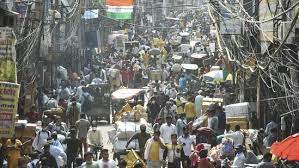India’s cruel second wave of Covid-19 Pandemic has barely receded and there’s already talk about the next wave.
As the country begin to lift restrictions, a mathematical model by the Indian Institute of Technology, Kanpur, published this week, has predicted three scenarios for a possible third wave in the country. The model assumes most Covid-19 restrictions will be lifted by July 15. In the worst-case scenario, India could see as many as 500,000 cases a day, with a peak by September (the second wave peaked at around 400,000 cases in May). In the best-case scenario, daily cases could be at 200,000 a day.
Both scenarios envision that a third wave would be significantly larger than India’s first wave, where cases reached a peak of 98,000 a day in September 2020. The researchers wrote that effective vaccination programmes could bring down this peak, but do not clarify to what extent.
Some health experts like Dr Randeep Guleria, director of All India Institute of Medical Sciences, India’s premier public hospital, fear that a third wave could begin as early as in the next six or eight weeks. Health officials in the western state of Maharashtra, one of the worst-hit states during the second wave, have said that if all restrictions are lifted, as they have begun to in the state, it could see another wave within the next fortnight.
India has only fully vaccinated about 4% of its population., raising fears that a third wave of Covid-19 cases in the country could result in a disastrous number of hospitalizations and deaths, even as it recovers from the devastation of previous infections.
But as is the case with pandemic-related scientific modelling, these projections are highly dependent on what happens now, as India’s second wave recedes and vaccinations pick up.

